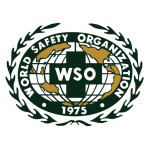Given the above assumption, preparation for the examinations may require the use of sources not referenced. The number of references could be cost prohibitive to purchase, but could be obtained from a local library. Hopefully, many of these publications are already a part of the applicant’s personal library.
The questions in the examination reflect the complexity of problems typically found in the day to day work of the safety professional. The answer to given questions may require integrating knowledge from several sources or subject areas. Questions may also involve the application of techniques to novel situations. These examinations assume that the candidate has kept informed of the current technical literature and has developed the ability to combine knowledge and experience to solve problems encountered within his or her field of expertise.
With the above information and study of the references, a safety professional should be able to successfully complete the required exams to accomplish certification. Following is a listing of publications that should be used in your preparations for the examinations.
The Core Subject References (books) may be used during the examination:
- Accident Prevention Manual for Business & Industry (Engineering and Technology) 11th ed., NSC, Chicago, 1997.
- Fire Protection Handbook, 18th ed, Cote, Arthur E, P.E.
- National Fire Protection Association, Quincy, Massachusetts, 1997.
- Fundamentals of Industrial Hygiene 4th ed.: NSC, Chicago, 1996
- International Association Of Drilling Contractors, Accident Prevention Reference Guide Houston, Texas 1998 (for the Oil Well Specialization only)




